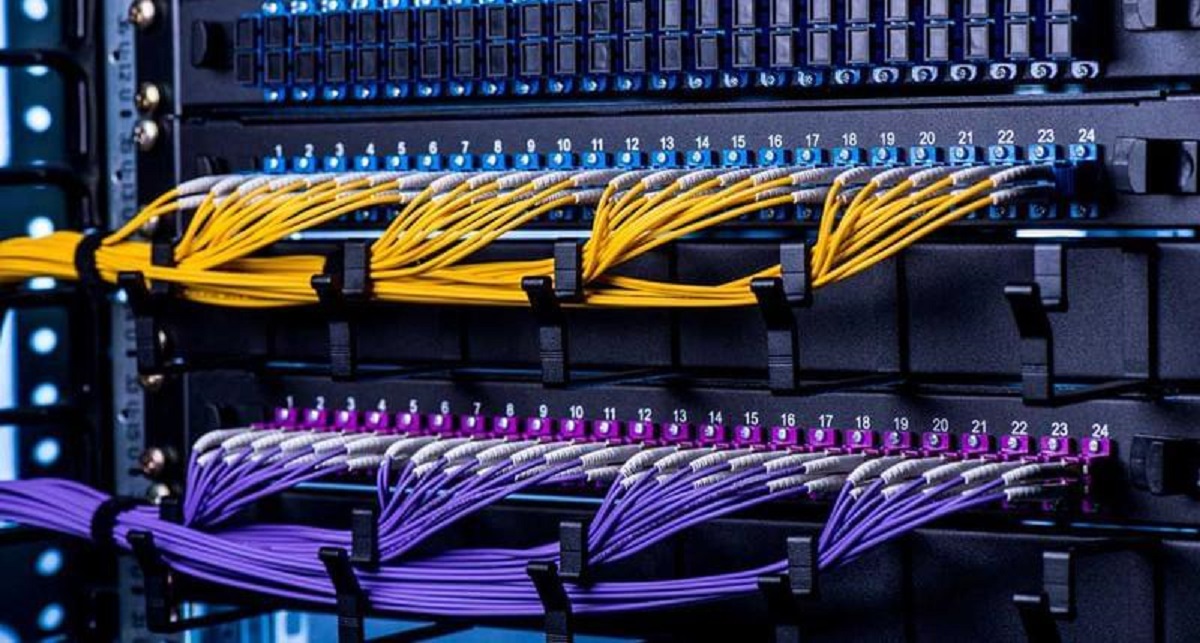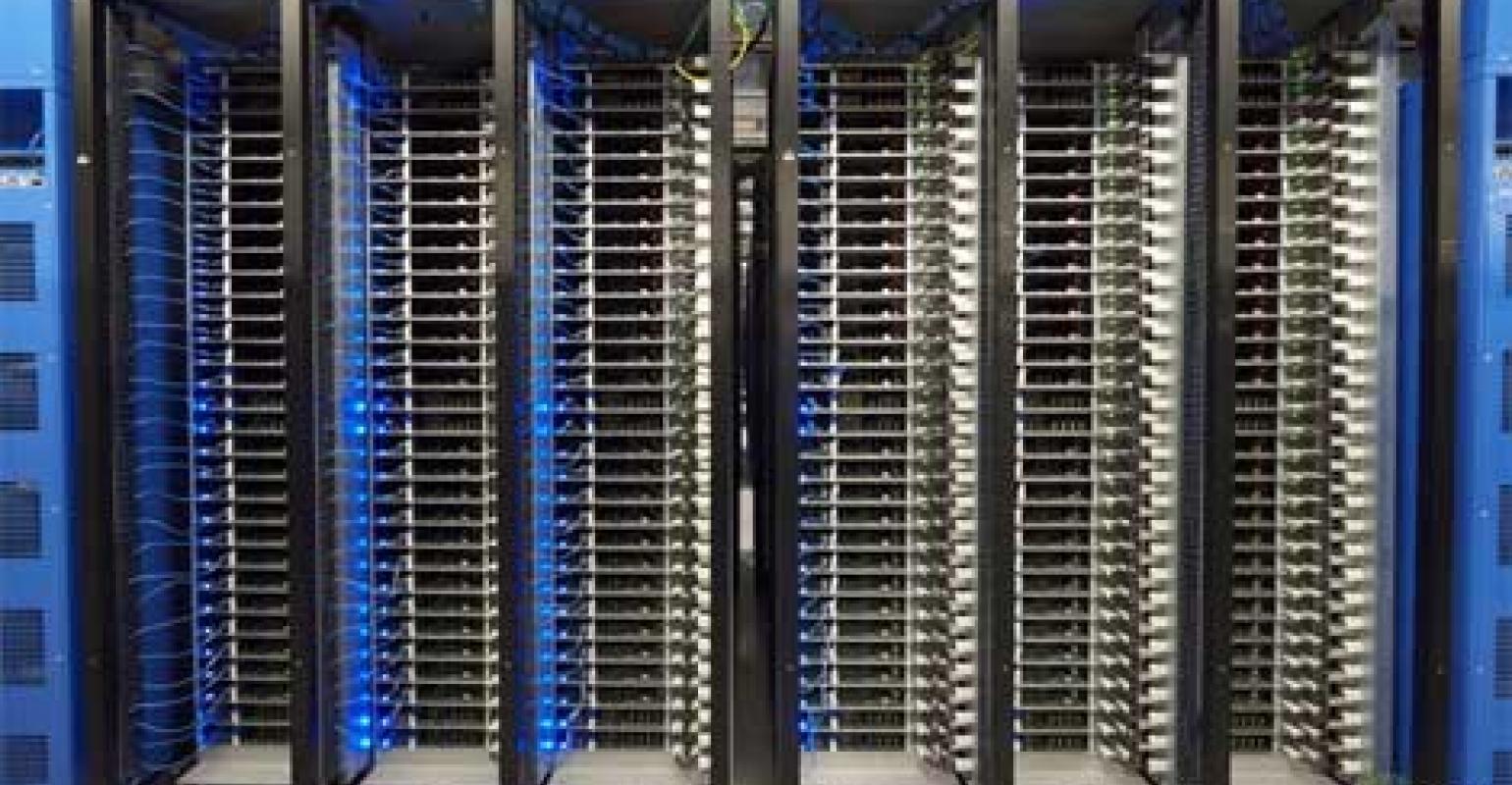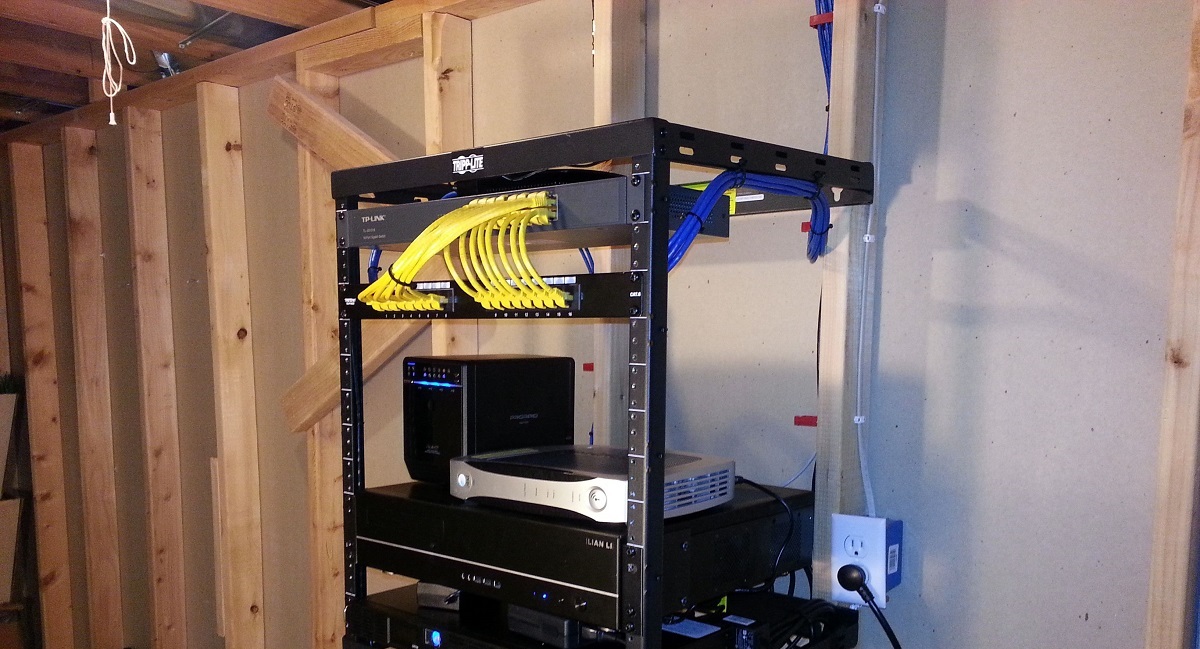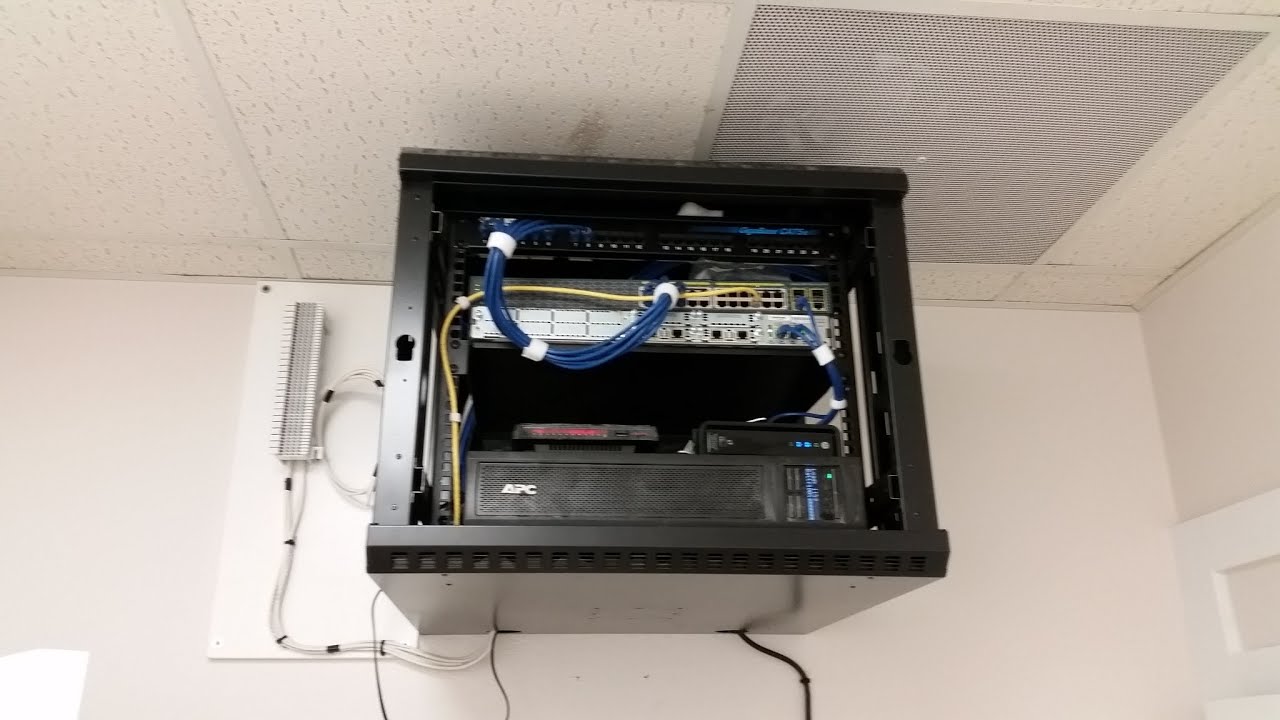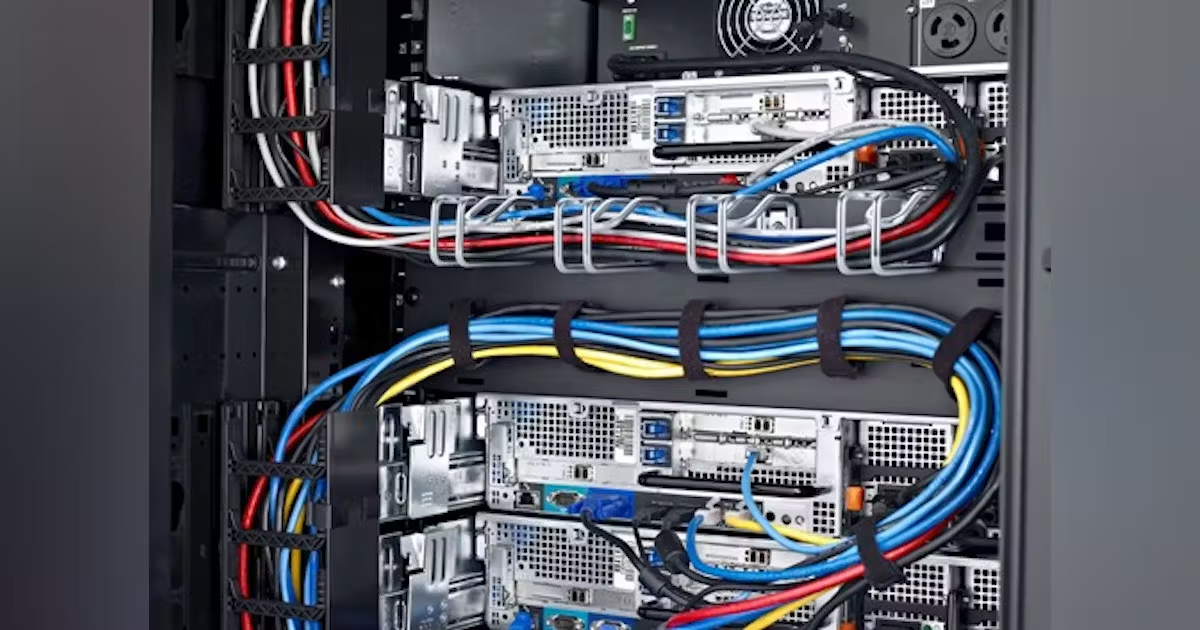Introduction
Organizing a server rack is crucial for maintaining a reliable and efficient IT infrastructure. A properly organized server rack improves accessibility, reduces downtime, and enhances overall system performance. Whether you are setting up a new server room or revamping an existing one, careful planning and implementation are the keys to success.
By following best practices in server rack organization, you can ensure that your equipment is easy to manage, troubleshoot, and upgrade. This article will guide you through the essential steps to organize a server rack effectively.
First, it is essential to assess your needs. Consider the number and types of servers, networking equipment, power requirements, and future growth projections. This evaluation will help determine the size and configuration of the server rack that best suits your needs.
Next, plan the layout of the server rack. Position the heaviest and highest heat-producing devices at the bottom, allowing for proper weight distribution and heat dissipation. Place servers and switches in a way that optimizes cable management and minimizes the risk of power and network cable interference.
Cable management is a critical aspect of server rack organization. Properly route and secure cables to maintain a neat and organized appearance. Use cable management tools such as horizontal and vertical cable managers, cable ties, and cable trays to prevent tangling and accidental disconnections. This not only enhances aesthetics but also simplifies future maintenance and troubleshooting.
Consider the use of rack shelving to store non-rackmountable equipment or accessories. Shelves can be used to hold monitors, keyboards, backup tapes, and other devices that need to be readily accessible. By utilizing rack shelving, you can keep your server rack clutter-free and maintain efficient use of space.
Power distribution is another critical aspect of server rack organization. Use power distribution units (PDUs) to provide a stable and monitored power supply to the connected devices. Ensure that the PDUs are properly mounted and labeled for easy identification and troubleshooting.
Proper cooling is vital to prevent overheating of servers and networking equipment. Consider utilizing fans, rack-mounted cooling units, or air conditioning systems to maintain optimal temperature levels. Implementing proper airflow management techniques, such as front-to-back ventilation, can further enhance cooling efficiency.
Labeling and documenting your server rack is essential for easy identification, maintenance, and troubleshooting. Clearly label each device, cable, and port to minimize confusion and save time during daily operations and hardware replacements. Additionally, maintain accurate documentation of each component, its location, its serial number, and any relevant network configurations.
Maintenance and troubleshooting should be regular practices to ensure the smooth operation of your server rack. Implement a routine inspection schedule to check for loose connections, equipment failures, and environmental issues. Regularly clean the server rack and its components to remove dust and debris that can impair performance.
By following these steps for organizing your server rack, you can create an efficient and manageable IT infrastructure. Investing time and effort into proper organization will not only save you time and frustration but will also contribute to the overall stability and reliability of your network.
Assessing your needs
Before organizing your server rack, it is essential to assess your needs and requirements to determine the best configuration for your IT infrastructure. This step is crucial to ensure that your server rack can accommodate your current and future needs.
Start by evaluating the number and types of servers, networking devices, and other equipment that will be housed in the server rack. Consider the rack unit (U) sizes required for each device, as this will dictate the height and capacity of the rack. Take into account any future expansion plans and growth projections to avoid outgrowing the rack once it is set up.
Power requirements are another important consideration. Analyze the power consumption of your equipment and ensure that the server rack can support the necessary voltage and amperage. Evaluate the availability and reliability of power sources to determine if additional backup power supplies, such as uninterruptible power supplies (UPS), are needed.
Networking needs should also be carefully assessed. Determine the number and type of network switches and routers that will be installed in the server rack. Consider the required uplink bandwidth, the number of ports needed, and any special networking features required for your infrastructure.
Space and cooling requirements are crucial factors to consider. Measure the available floor space and height where the server rack will be placed. Ensure that there is ample clearance for airflow and maintenance access. Additionally, evaluate the existing cooling capabilities of your server room and consider any additional cooling options that may be necessary to maintain optimal temperature levels.
Security requirements should not be overlooked. Assess the level of physical security needed for your equipment. Evaluate the need for lockable doors, surveillance cameras, and access control systems to protect against unauthorized access to your server rack.
Lastly, budget and cost considerations should be taken into account. Determine your budget for the server rack, including the rack itself, accessories, and any additional equipment needed. Consider the long-term cost implications and the return on investment (ROI) of your server rack organization plan.
By thoroughly assessing your needs and requirements, you can effectively plan and configure your server rack to meet the demands of your IT infrastructure. This process will ensure that your server rack is scalable, efficient, and capable of supporting your current and future needs.
Planning the layout
Planning the layout of your server rack is a crucial step in ensuring efficient organization and optimal performance of your IT infrastructure. A well-thought-out layout will facilitate easy accessibility, efficient cable management, and effective airflow within the rack.
Consider the weight and size of your equipment when planning the rack layout. Start by placing the heaviest and largest devices at the bottom of the rack to maintain stability and prevent top-heavy configurations. This positioning also helps distribute weight evenly throughout the rack.
Next, consider the heat generated by your equipment. Servers and high-performance networking devices can generate significant heat, which must be properly dissipated to prevent overheating. Position devices that generate the most heat at the top of the rack, allowing hot air to rise and exit the rack. Cooler air can then be drawn in at the bottom of the rack, enhancing overall cooling efficiency.
For efficient cable management, plan the layout in a way that minimizes cable clutter and avoids tangled or crossed cables. Route cables in a logical and organized manner, avoiding sharp bends or excessive cable lengths. Consider utilizing cable management tools such as cable trays, vertical and horizontal cable managers, and cable ties to maintain a neat appearance and facilitate easy maintenance and troubleshooting.
When positioning servers and switches in the rack, think about accessibility to front and rear ports, power buttons, and indicator lights. Ensure that there is enough space between devices for easy cable installation and removal. Leave sufficient clearance at the rear of devices to accommodate cable routing and maintenance activities.
Additionally, plan for future expansion and scalability. Leave empty U spaces in the rack to accommodate future equipment additions or upgrades. Consider the availability of spare power outlets and network ports for future devices. This foresight will save time and effort when expanding your infrastructure in the future.
Consider the use of rack accessories such as shelves, drawers, and trays to store non-rackmountable equipment or accessories. These additions can help keep the rack organized and tidy, making it easier to access and maintain equipment.
Lastly, document and label the layout of your server rack. Create a visual map that outlines the positions of devices, their connections, and any relevant configuration details. Label each device, cable, and port to simplify identification and avoid confusion during maintenance or expansion.
By carefully planning the layout of your server rack, you can create an organized and optimized infrastructure. This process will improve accessibility, streamline cable management, and enhance overall performance and reliability.
Cable management
Effective cable management is crucial for maintaining an organized and efficient server rack. Messy and tangled cables not only make it difficult to identify and troubleshoot connectivity issues but also impede proper airflow, increasing the risk of overheating. Implementing cable management practices will improve accessibility, reduce downtime, and simplify maintenance tasks.
Start by planning the cable routes before installing any equipment in the rack. Identify the optimal path for each cable, considering the length, flexibility, and reachability of the cables. Take into account the locations of power outlets and network ports to ensure proper connections.
Utilize cable management tools such as cable trays, cable managers, and cable ties to route and secure cables neatly. Cable trays can be mounted horizontally or vertically along the sides or rear of the rack to provide a dedicated pathway for cables. Cable managers, including horizontal and vertical organizers, help keep the cables separated and prevent tangling.
Organize cables according to their type and function. Group similar cables together, such as power cables, network cables, and fiber optic cables. Keep cables of different types and lengths separate to minimize interference and signal degradation. Use color-coded cable ties or labels to identify and differentiate the cables easily.
Maintain proper cable lengths by avoiding excessive slack or overstretching. Strive for neat and straight cable runs, avoiding sharp bends or twists. Excess cable lengths can be neatly bundled or secured with Velcro or cable ties to prevent them from obstructing airflow or getting tangled with other cables.
Labeling cables is an essential aspect of cable management. Use durable and easy-to-read labels to identify each cable and its corresponding endpoint. Include relevant information such as device names, port numbers, and network configurations. Proper labeling saves time during troubleshooting or when making changes to the network.
Regularly inspect and manage your cables to ensure they remain organized and secured. Perform routine cable audits to identify any issues such as loose connections, damaged cables, or incorrect labeling. Replace any worn-out cables and reorganize any cables that may have become tangled or moved out of place.
Finally, document your cable management plan. Create a visual diagram or spreadsheet that outlines the cable routes, connections, and labeling scheme. This documentation will help streamline future maintenance, expansion, or troubleshooting efforts.
By implementing effective cable management practices, you can maintain a neat and organized server rack, making it easier to identify, maintain, and troubleshoot your network infrastructure. Taking the time to properly manage and label cables will enhance efficiency, reduce downtime, and extend the lifespan of your equipment.
Rack shelving
Rack shelving plays a vital role in organizing a server rack by providing additional storage space for non-rackmountable equipment or accessories. Utilizing rack shelves effectively will help keep your server rack organized, maximize space utilization, and improve accessibility.
There are various types of rack shelves available, ranging from fixed shelves to sliding or adjustable shelves. Fixed shelves are solid platforms that offer a stable surface for equipment such as monitors, keyboards, and backup tapes. Sliding or adjustable shelves can be pulled out or adjusted to accommodate different equipment sizes and allow for easier access during maintenance tasks.
When selecting rack shelves, consider the weight capacity of the shelves and ensure they can support the intended equipment. Different shelves have different weight limits, so it’s essential to choose shelves that can safely hold the equipment you plan to store.
Proper installation and positioning of rack shelves are critical. Place shelves in a way that does not obstruct ventilation or hinder cable management. Ensure that there is sufficient clearance above the shelf for any equipment stored on it and for easy access during maintenance or upgrades.
When arranging equipment on rack shelves, consider the accessibility and routing of cables. Place equipment in a way that allows for easy cable connections and prevents cables from becoming tangled or obstructing airflow.
Label equipment stored on rack shelves to ensure easy identification. Use tags or labels to indicate the device name, purpose, and any relevant connection information. This labeling will save time and effort when troubleshooting or performing maintenance tasks.
Regularly inspect and organize rack shelves to remove any unused or outdated equipment. Perform periodic audits to ensure that equipment is labeled correctly and that shelves are not overloaded. This maintenance will help keep your server rack clutter-free and ensure optimal space utilization.
Additionally, consider the use of drawers or bins on rack shelves to store smaller accessories or cables. This will keep them organized and easily accessible, further enhancing the overall organization of the server rack.
By incorporating rack shelving into your server rack organization plan, you can maximize storage capacity, increase accessibility, and create a more streamlined and efficient IT infrastructure. Proper installation, labeling, and maintenance of rack shelves will contribute to a well-organized and functional server rack.
Power distribution
Effective power distribution is essential for maintaining a reliable and efficient server rack. Properly distributing power ensures that all devices receive a stable and regulated power supply, minimizing the risk of equipment failure and optimizing performance.
When planning power distribution, start by assessing the power requirements of your equipment. Determine the voltage and amperage needed for each device and calculate the total power consumption. This assessment will help you determine the number and type of power distribution units (PDUs) required.
PDUs can be either basic or intelligent. Basic PDUs distribute power without any additional features, while intelligent PDUs provide advanced monitoring and management capabilities. Consider your specific needs and budget when selecting the type of PDU to use.
Position the PDUs strategically within the server rack to ensure easy access and efficient cable management. Mount PDUs vertically or horizontally based on your specific rack configuration. Consider placing PDUs near the devices they will be powering to minimize cable lengths.
Label each PDU to clearly indicate its purpose and the devices it powers. This labeling will facilitate easy identification and troubleshooting in the event of power-related issues or equipment maintenance.
Ensure that the PDUs are properly grounded to protect against power surges and electrical faults. Follow electrical safety guidelines and regulations to minimize the risk of electrocution or equipment damage.
Consider the need for backup power supplies such as uninterruptible power supplies (UPS). UPS units provide temporary power during outages or voltage fluctuations, allowing for graceful shutdowns and protecting against data loss or equipment damage. Assess the criticality of your equipment and the availability of backup power sources to determine if UPS units are necessary.
Regularly monitor and manage power consumption to optimize energy efficiency and prevent overloading. Use PDU monitoring features to track power usage, temperature levels, and current draw. Set thresholds and alerts to detect abnormal power consumption or potential issues.
Document the power distribution setup, including the locations of PDUs, the devices they power, and relevant configuration details. This documentation will be valuable for future maintenance, troubleshooting, or expansion efforts.
Regularly inspect the power distribution system for loose connections, signs of wear, or any power-related issues. Perform routine maintenance and address any abnormalities promptly to ensure the continued reliability and stability of your server rack.
By implementing effective power distribution practices, you can ensure that your server rack operates efficiently and reliably. Proper power distribution minimizes the risk of equipment failure, improves overall performance, and contributes to a stable and resilient IT infrastructure.
Cooling options
Effective cooling is crucial for maintaining optimal temperature levels and preventing overheating in your server rack. Proper cooling ensures the longevity and performance of your equipment by dissipating heat and maintaining a stable operating environment.
There are various cooling options to consider when organizing your server rack:
- Fans: Install fans within the server rack to improve air circulation and promote proper airflow. Fans can be mounted on the front, rear, or sides of the rack to draw in cool air and expel hot air. Consider both AC and DC fans, and ensure they are properly maintained to avoid dust buildup or fan failures.
- Rack-mounted cooling units: These dedicated cooling units are designed specifically for server racks. They are compact and can be installed within the rack itself. Rack-mounted cooling units use a combination of fans and refrigeration systems to remove heat efficiently. These units are ideal for high-density racks or server rooms with limited cooling capabilities.
- Air conditioning: For larger server rooms or data centers, consider implementing a dedicated air conditioning system to maintain optimal temperature levels. Proper air conditioning provides adequate cooling for the entire room, ensuring the stability of your server rack and IT infrastructure. Consult with HVAC professionals to design and install the most suitable air conditioning system for your needs.
- Hot and cold aisle containment: Implementing hot and cold aisle containment strategies can significantly improve cooling efficiency. By segregating hot and cold airflow, you can prevent the mixing of cool and hot air, reducing energy consumption and promoting better cooling performance. Use physical barriers, such as aisle containment curtains or doors, to separate the hot and cold aisles and better direct airflow.
- Optimized airflow management: Proper airflow management helps maximize the effectiveness of cooling systems. Position devices in the rack to facilitate front-to-back or bottom-to-top airflow. Ensure that airflow paths are not blocked or obstructed by cables, equipment, or obstructions. Use cable management tools to neatly route cables away from air vents and ensure unimpeded airflow.
Regularly monitor and maintain your cooling systems to ensure their effectiveness. Clean air vents and filters regularly to prevent dust accumulation. Monitor temperature levels, humidity, and airflow within the server rack to detect any anomalies or potential cooling issues. Implement temperature and humidity sensors to provide real-time visibility into the conditions within your server rack.
As your IT infrastructure evolves, periodically reassess your cooling requirements. Consider factors such as changes in equipment density, increased power consumption, or new cooling technologies. This evaluation will help you identify any necessary upgrades or modifications to the cooling systems within your server rack.
By implementing appropriate cooling options and maintaining optimal temperature levels, you can protect your equipment from overheating and ensure the reliable operation of your server rack. Choosing the right cooling solutions and regularly monitoring their effectiveness will contribute to the longevity and performance of your IT infrastructure.
Labeling and documenting
Labeling and documenting your server rack is essential for efficient organization, easy identification, and effective troubleshooting. By implementing a clear labeling and documentation system, you can save time and minimize errors when it comes to managing and maintaining your IT infrastructure.
Start by labeling each device within your server rack. Use durable and easy-to-read labels to indicate the device name, model, and any relevant information such as IP addresses or serial numbers. Consistent labeling ensures that devices can be easily identified, even when performing remote management tasks.
Label each network cable to identify its purpose and destination. Use color-coded labels or tags to differentiate between different types of cables, such as Ethernet, fiber optic, or power cables. Include information such as cable length and the devices it connects to, making it easier to trace and troubleshoot connectivity issues.
Label power strips, power outlets, and circuit breakers to indicate their purpose and corresponding devices. Clearly mark any backup power sources, such as UPS units, to ensure easy identification during power-related incidents or maintenance.
Document the layout and configuration of your server rack. Create a visual diagram or spreadsheet that outlines the position of each device, its connection ports or slots, and relevant network configurations. This documentation will serve as a reference for daily operations, maintenance tasks, or troubleshooting efforts.
Include important details in your documentation, such as device specifications, firmware versions, and any custom configurations. Update this information regularly to capture any changes or upgrades made to the server rack.
Consider using digital documentation tools or asset management software to centralize and streamline the labeling and documentation process. These tools provide a centralized database for storing and accessing critical information about your server rack, reducing manual errors and ensuring consistency.
Regularly review and audit your labeling and documentation to ensure accuracy and completeness. Verify that labels are still legible and properly attached. Update any outdated or incorrect information in your documentation to reflect the current state of your server rack and its components.
Proper documentation and labeling contribute to the overall efficiency and productivity of your IT operations. They enable quick identification of devices, simplify troubleshooting processes, and facilitate smoother coordination among team members. By investing time and effort in labeling and documenting your server rack, you can enhance the overall organization and management of your IT infrastructure.
Maintenance and troubleshooting
Maintenance and troubleshooting are critical aspects of server rack management. Regular maintenance ensures the smooth operation of your equipment, while effective troubleshooting processes help minimize downtime and resolve issues efficiently. By following best practices in maintenance and troubleshooting, you can optimize the performance and reliability of your server rack.
Develop and adhere to a routine maintenance schedule for your server rack. This schedule should include tasks such as cleaning air vents and filters, inspecting cable connections, and checking for any physical damage or signs of wear. Regular maintenance prevents dust buildup, identifies potential issues before they escalate, and extends the lifespan of your equipment.
Perform thorough inspections of your server rack to identify any loose cables, loose connections, or components that may be wearing out. Keep an inventory of spare parts to facilitate quick replacements when necessary.
When troubleshooting issues, start by gathering information about the problem. Consult your documentation to understand the setup, configurations, and connections of the affected devices. Utilize any diagnostic tools or monitoring software to investigate for error messages, log files, or performance data that can help pinpoint the cause of the issue.
Follow a systematic approach when troubleshooting. Begin by checking the physical connections, ensuring that all cables are securely plugged in and that power is flowing to the devices. Use cable testers or network diagnostic tools to verify the integrity of network connections. Test devices individually to isolate any faulty equipment.
Utilize remote management capabilities whenever possible. Access devices through remote management interfaces to perform diagnostics, apply firmware updates, or adjust settings. Remote management tools allow for quick identification and resolution of issues without the need for physical access to the server rack.
Keep detailed records of any troubleshooting steps taken and their outcomes. This information will be valuable in identifying recurring issues or patterns and can assist in future troubleshooting efforts.
Ensure that your staff is adequately trained in maintenance and troubleshooting procedures. Provide training sessions or resources to keep your team updated on new technologies and best practices. This knowledge empowers your team to respond quickly and effectively to any issues that arise.
Regularly review and update your documentation and labeling system. This ensures that accurate information is readily available for future maintenance or troubleshooting tasks. Update any changes or modifications made to the server rack promptly to maintain the accuracy of your documentation.
Lastly, maintain open communication and collaboration with vendors or technical support teams. Engage with them when troubleshooting complex issues or when assistance is needed. Their expertise and guidance can help resolve problems more efficiently.
By implementing proactive maintenance practices and following a systematic approach to troubleshooting, you can minimize downtime, increase the reliability of your server rack, and ensure the smooth operation of your IT infrastructure.







